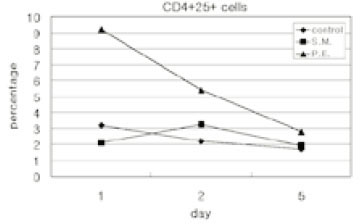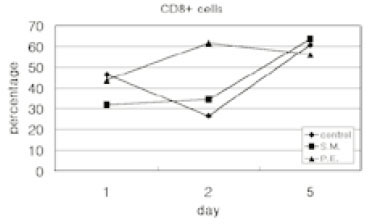References
1. Marton IJ, Kiss C. Characterization of inflammatory cell infiltrate in dental periapical lesions. Int Endod J 1993. 26131–136.
2. Fouad AF. IL-1alpha and TNF-alpha expression in early periapical lesions of normal and immunodeficient mice. J Dent Res 1997. 76(9)1548–1554.
3. Back SH, Lim SS. An immunohistochemical study on the immunoglobulin g subclasses of the experimentally induced rat pulp and periapical pathoses. J Korean Acad Conserv Dent 1991. 1641–59.
4. Kopp W, Schwarting R. Differentiation of T lymphocyte subpopulations, macrophages, and HDA-DR-restricted cells of apical granulatuib tissue. J Endod 1989. 1572–75.
5. Stashenko P, Yu SM, Wang CY. Kinetics of immune cell and bone resorptive responses to endodontic infections. J Endod 1992. 18422–426.
6. Kawashima N, Okiji T, Kosaka T. Kinetics of macrophages and lymphoid cells during the development of experimentally induced periapical lesions in rat molars; a quantitative immunohistochemcial study. J Endod 1996. 22311–316.
7. Matsuo T, Ebisu S, Shimabukuro Y. Quantitative analysis of immunocompetent cells in human periapical lesions; Correlations with clinical findings of the involved teeth. J Endod 1992. 8497–500.
8. Oh TS, Lim SS. Flow cytometric analysis of lymphocyte and cycling cell distribution in periapical lesions. J Korean Acad Conserv Dent 1993. 18317–340.
9. Sol MA, Tkaczuk J. Voigt JJ Characterization of lymphocyte subpopulations in periapical lesions by flow cytometry. Oral Microbiol Immunol 1998. 13253–258.
10. Abbs AK, Murphy KM, Sher A. Functional diversity of helper T lymphocytes. Nature 1996. 383787–793.
11. Yamasaki M, Nakane A, Kumazawa M. Endotoxin and Gram-negative bacteria in the rat periapical lesions. J Endod 1992. 18(10)501–504.
12. Gemmell E, Winning TA, Bird PS. Cytokine profiles of lesional and splrenic T cells in Porphyromonas gingivalis infection in a murine model. J Periodontol 1998. 691131–1138.
13. Byun HY, Lim SS, Park DS. Levels of tnf-α,-β, il-1β, tgf-β1 and their relationship with the presence of specific black pigmented bacteria in periapical and pulpal diseases. J Korean Acad Conserv Dent 1999. 241–12.
14. Hren NI, Gubina M, Ihan A. Cytotoxic T lymphocytes versus streptococcal colonization in periapical granulomas. J Endod 1999. 25239–242.
15. Speer ML, Madonia JV, Heuer MA. Quantitative evaluation of the immunocompetence of the dental pulp. J Endod 1977. 3418–423.
16. Jontell M, Gunraj N, Bergenholtz G. Immunocompetent cells in normal dental pulp. J Dent Res 1986. 661149–1153.
17. Pulver WH, Taubman MA, Smith OJ. Immune components in normal and inflamed human dental pulp. Arch Oral Biol 1977. 22103–111.
18. Lee WC, Lim SS. Lymphocytes population in relation to clinical symptoms in irreversible pulpitis. J Korean Acad Conserv Dent 1995. 20235–249.
19. Hahn CL, Falkler WA, Siegel MA. A study of T and B cells in pulpal pathosis. J Endod 1989. 1520–26.
20. Mangkornkarn C, Steiner JC, Bohman R, Lindemann RA. Flow cytometric analysis of human dental pulp. J Endod 1991. 1749–53.
21. Kotylo HA, Sample RB, Redmond NL. Reference ranges for lymphocyte subsets. A comparison of standard vs rapid whole-blood lysis techniques. Arch Pathol Lab Med 1991. 115181–184.
22. Kim SA, Bae KS, Lim SS. Flow cytometric analysis of lymphocytes in normal and inflamed pulp. J Korean Acad Conserv Dent 1997. 22374–387.
23. Okiji T, Morita I, Sunada I, Murota S. Involvement of arachidonic acid metabolites in increases in vascular permeability in experimental dental pulpal inflammation in the rat. Arch Oral Biol 1989. 34523–528.
24. Bergenholtz G, Nagaoka S, Jontell M. Class II antigen expressing cells in experimentally induced pulpitis. Int Endod J 1991. 248–14.
25. Okiji T, Morita I, Kobayashi C, Sunada I, Murota S. Arachidonic-acid metabolosm in normal and experimentally-inflamed rat dental pulp. Arch Oral Biol 1987. 32(10)723–727.
26. Hashimoto S, Maeda M, Yamakita J, Nakamura Y. Effects of zinc oxide-eugenol on leucocyte number and lipoxygenase products in artificially inflamed rat dental pulp. Arch Oral Biol 1990. 3587–93.
27. Suzuki N, Okiji T, Suda H. Enhanced expansion of activation - association molecules on macrophages of heterogeneous populations in expanding periapical lesions in rat molars. Arch Oral Biol 1999. 4467–79.
28. Rauschenberger CR, Bailey JC, Cootauco CJ. Detection of human IL-2 in normal and inflamed dental pulps. J Endod 1997. 23366–370.
29. Nguyen T, Wang R, Russeu JH. IL-12 enhances IL-2 function by inducing CD2 expression through a p38 mitogen-activated protein kinases pathway. Eur J Immunol 2000. 301445–1452.
30. Okiji T, Morita I, Sunada I, Murota S. The role of Leukotriene B4 in neutrophil infiltration in experimentally-induced inflammation of rat tooth pulp. J Dent Res 1991. 70(1)34–37.
31. Wedenberg C, Borstein R. Pulpal reactions in rat incisors to Caridex. Aust Dent J 1990. 35(6)505–508.
32. Kettering JD, Torbinejad M, Jones SL. Specificity of antibodies present in human periapical lesions. J Endod 1991. 17213–216.














